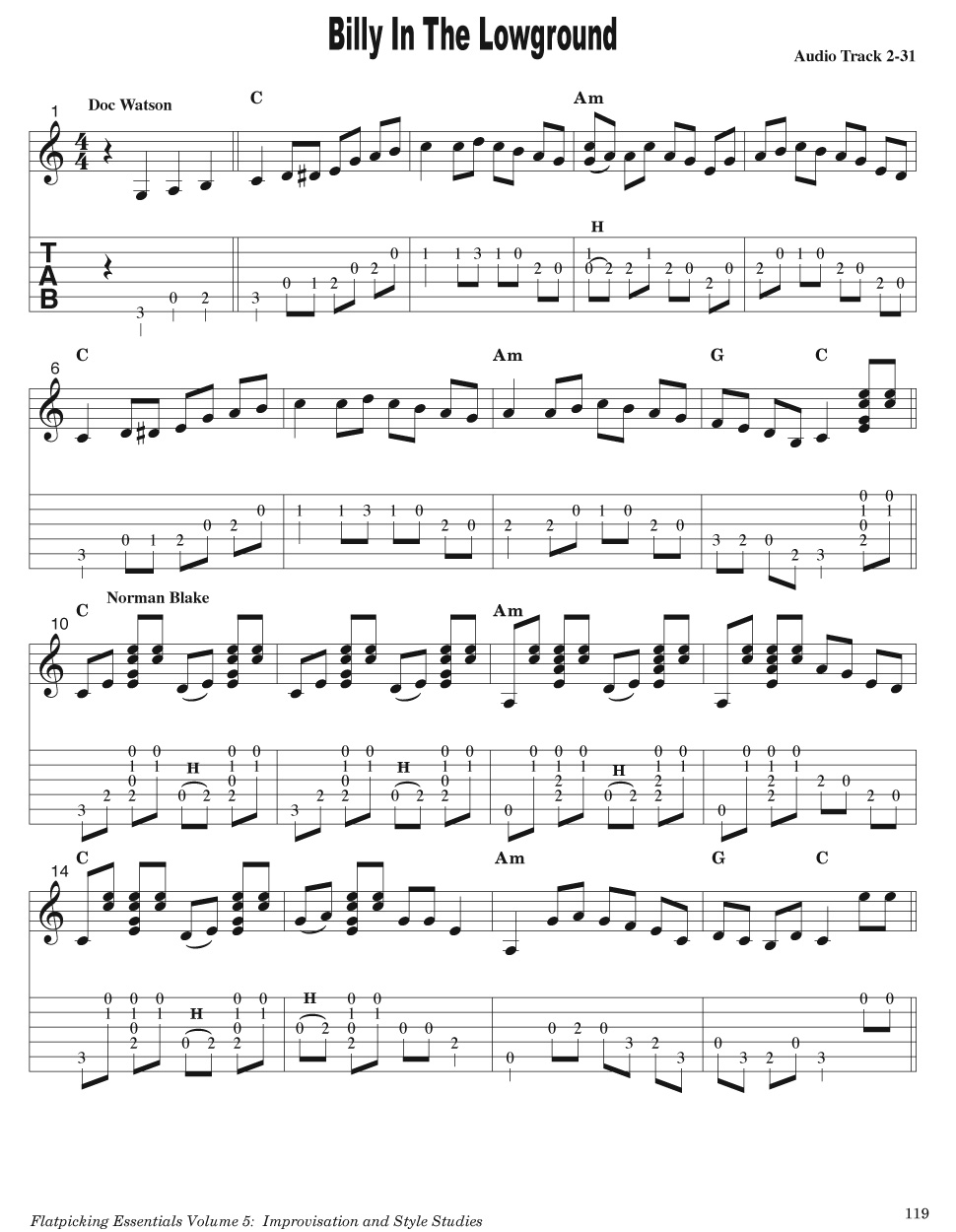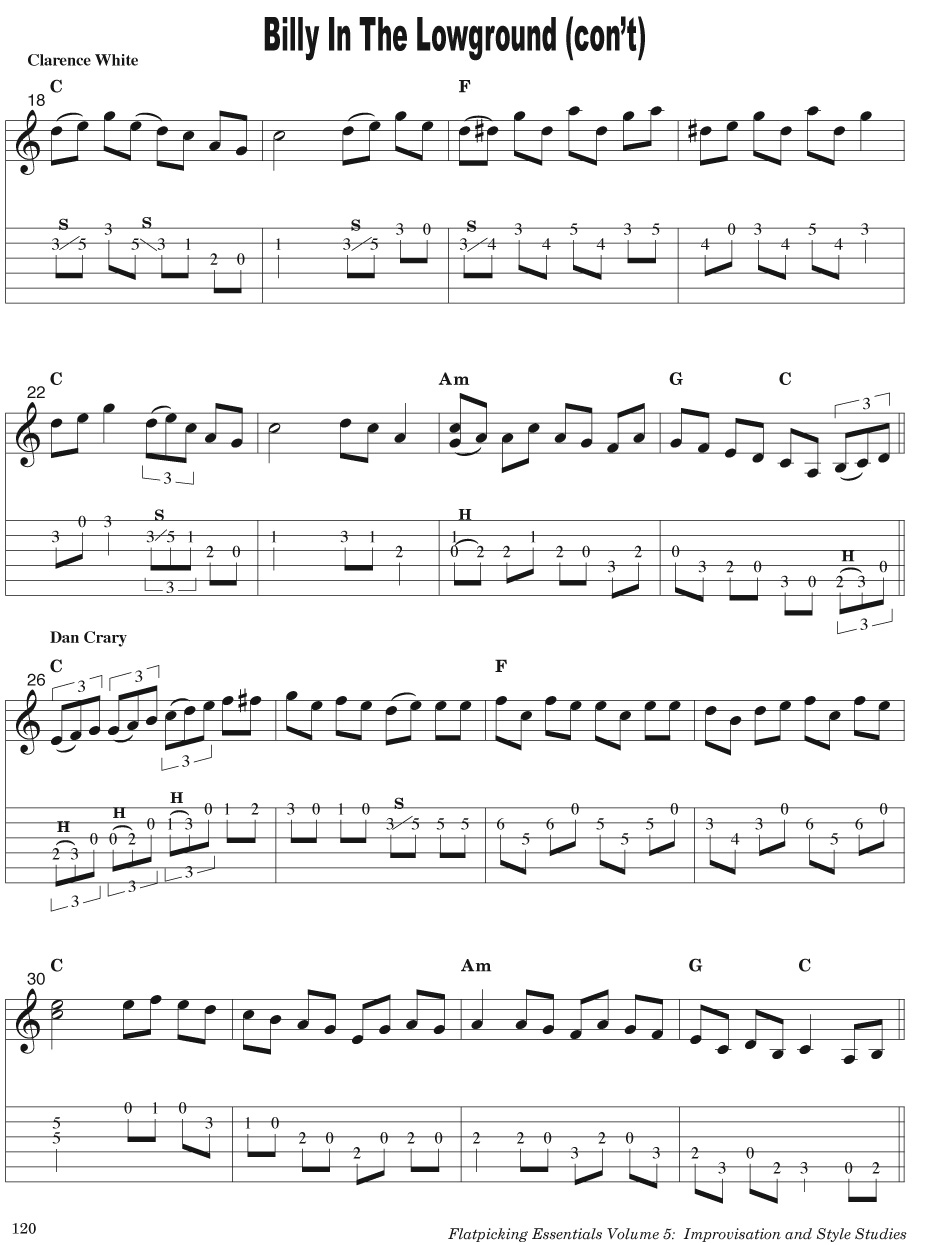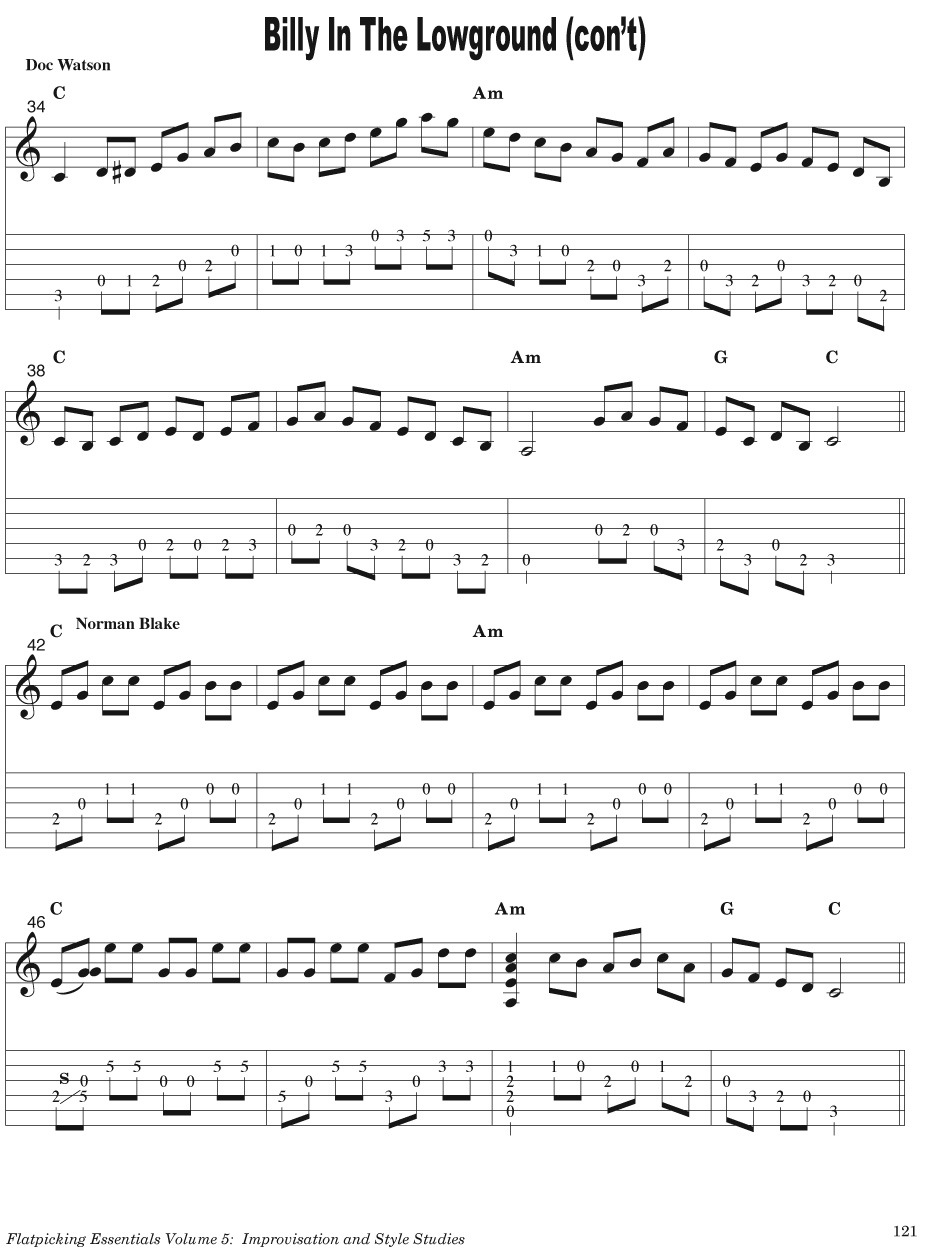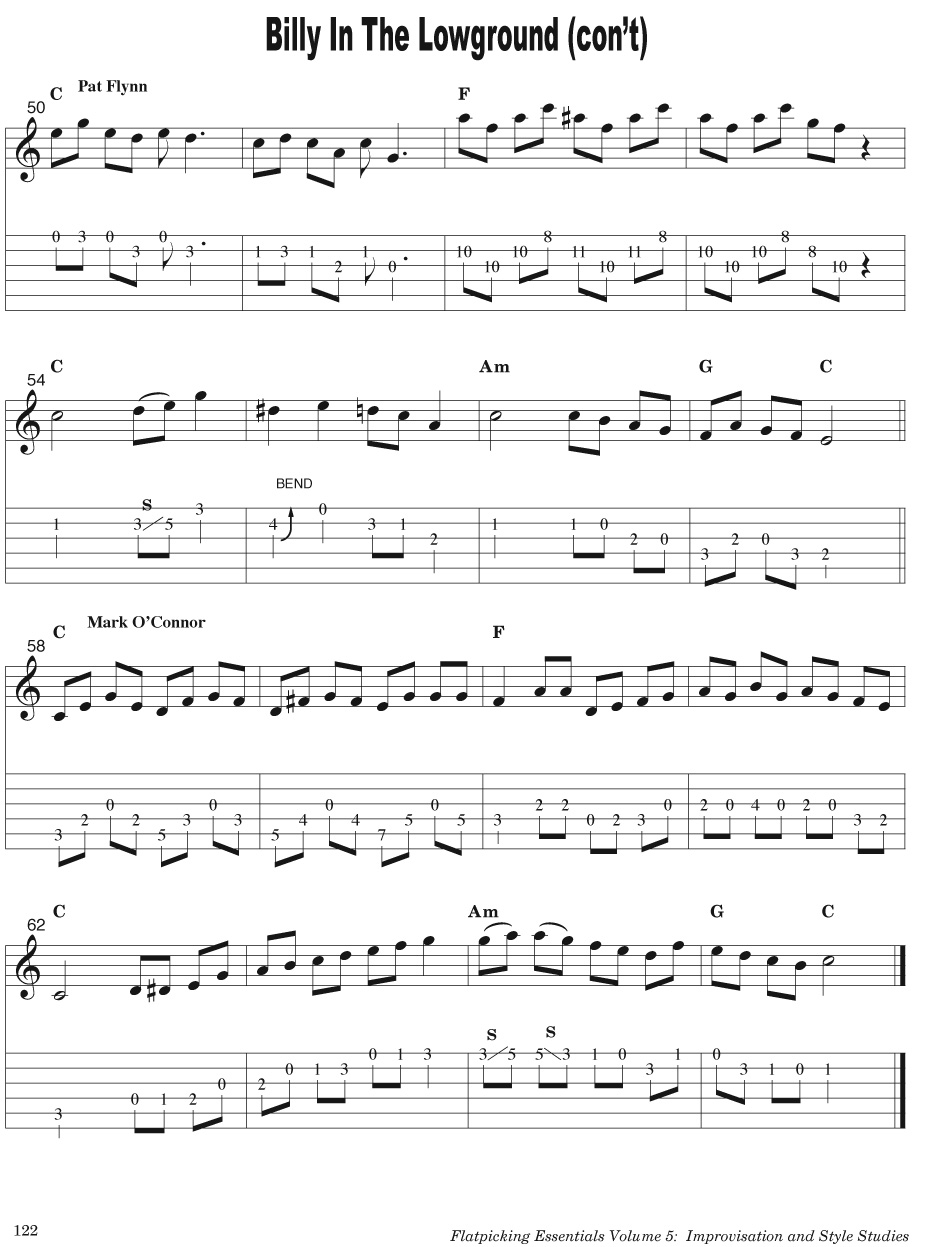|
August 2009 Free Flatpicking Lesson
from
Flatpicking Guitar Magazine
Exploring Flatpicking Styles with "Billy in the Lowground"
by Dan Miller and Tim May
Tim May and I just finished our newest volume of the
Flatpicking Essentials series. This one is titled Flatpicking Essentials, Volume 5: Improvisation and Style Studies.
Improvisation is one of those things that flatpickers always ask about
at workshops and seminars. It is one of those mysterious and elusive
concepts that is hard for many people to grasp. In this volume of the
Flatpicking Essentials
series we take away the mystery by presenting a step-by-step gradual
learning method that will have you improvising immediately and then
build your skill slowly and steadily. By the end of this book you will
have the confidence and the skill to step out and start improvising at
your next jam session. If you are interesting in really learning how to
improvise, I recommend that you check out this book.
In addition to the
extensive improvisation section, part 2 of this book includes “Style
Studies” that are focused on the “founding fathers” of flatpicking:
Doc Watson, Norman Blake, Clarence White, Tony Rice, and Dan Crary.
This section of the book profiles elements of each of these player’s
flatpicking styles, and then teaches you how to work those style
elements into your own solos by giving you many song and fiddle tune
examples.
The purpose of this section of the
Flatpicking Essentials
course is not to teach you how to play like note-for-note like Doc,
Tony, Norman, Dan, or Clarence. There are many books, CDs, videos, and
DVDs that cover the exact playing styles of each of these great
flatpickers. Our approach to this section of the book is to first
present to you what we think are the major contributions that each of
these artists brought to the world of flatpicking. This means that we
are going to focus on the general ideas and techniques that each of
these masters first brought to flatpicking that made their contribution
unique at that time. Every one of these players, with the exception of
Clarence White, is still playing to this day and they are each
extremely versatile. Over the decades that they have been playing and
recording music each have offered more to the world of flatpicking than
we could ever cover in one book. So, a thorough study of each of these
players is not our goal here.
Our goal is to examine
what made these players unique back when the first entered the music
world and how you can flavor your own playing with their ideas,
techniques, or style elements. In order to do so, we present short
sections on each player, which include a few example songs and/or licks
that contain elements of their style. These are not exact
note-for-note transcriptions, but rough arrangements based on solos
that these artist performed during the early stages of their careers.
Again, our goal is to simply give you a feel for their style, not teach
you to mimic or clone their style.
After we present a
short section on each of the above mentioned flatpickers, we then
present arrangements of eight different popular tunes, or songs, that
utilize these style elements. Each of these arrangement were
improvised by Tim May and recorded live without any prearranging,
overdubbing, or edits. In fact, coming into the studio Tim had no idea
what songs he was going to play. We decided on the tune or song in
the moment and then Tim played it improvisationally. The only outline
that Tim wrote up before playing the tune was to say, something like
“On the first section I’m going to think about Doc, the second section
Clarence, and the last time through I’ll think about Tony.” Then we
recorded.
Tim’s intention in
playing these song’s improvisationally was to give each different
section of the song the feel of a different player, but not be a clone
of any of these players. We presented the songs in this manner because
this is the way we would like our readers to study these flatpicking
masters. There is no reason to copy, or clone, what these players do.
We encourage you to learn something about what they brought to this
genre of music and then develop your own way to express those ideas in
your playing.
In this month’s lesson
we present you with one of the tunes from this course, “Billy in the
Lowground.” At the top of each section of the tune we have indicated
which artist Tim was thinking about while he was recording this tune.
You will notice that in this version Tim also threw in a few Pat Flynn
and Mark O’Connor licks.




|